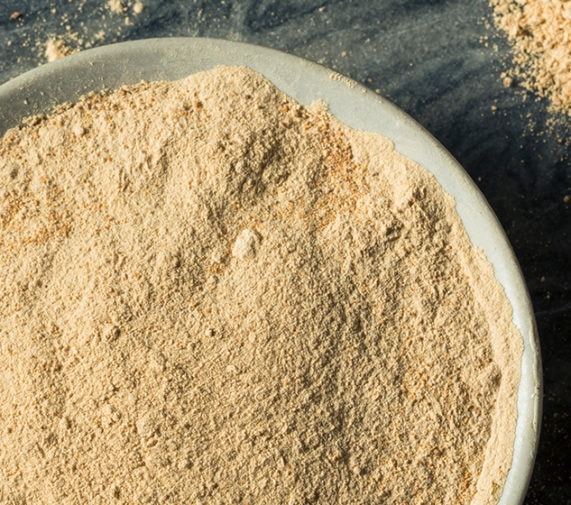It looks like a cross between a turnip and a fig; it’s a cruciferous cousin to kale and broccoli from the mustard family; and Andes-dwellers used it for centuries as a fertility and sex-drive enhancer. Meet your new favorite neturaceutical superfood—maca root.
The rest of the world first learned about this nutty, earthy-flavored root in 1553 from a Spaniard involved in the conquering of Peru, Cieza de Leon. A century later, a priest named Father Cobo touted its benefits on fertility, its stimulant properties and marveled at its resilience, as it grew in the frigid, inhospitable mountain soil where no other edible plant could. Maca root is filled with nutritious properties including protein (up to 16%), vitamins, amino acids, calcium, iron, and beneficial fatty acids and minerals such as calcium, iron, copper, zinc and potassium.
Since then, science has backed up many of the legendary claims. Peruvian studies show maca increases sperm motility and volume as well as libido in men (while reducing prostate weight). And a study out of Hong Kong on post-menopausal women reveals that the root reduced blood pressure and anxiety symptoms, which could also be related to increased libido and sexual function.
Maca might be beneficial as you work toward your fitness goals: A small study on swimming rats shows it may be tied to better performance and endurance. It’s also been known to improve memory and learning in mice.
But maca doesn’t just work on the inside. Applied topically, the root’s extract provides protection from the sun’s harmful UV rays.
Preparation
The root bulbs are typically dried, stored and ground into a powder and reconstituted or gelatinized. The recommended amount is 1,500 to 3,000 milligrams or three to six tablespoons a day, but start small. Though you can’t overdose, maca affects people in different ways, and some people might feel a little jittery, headachy or unable to sleep from the stimulant properties. You’ll also want to be careful if you’ve got a condition that could be affected by hormones, such as breast or ovarian cancer, or endometriosis or uterine fibroids, because maca can mimic estrogen.
You can incorporate it into your diet in several ways, much like you would a protein supplement. The Maca Team, purveyor of organic maca powder, has recipes for pancakes, hummus, muffins and even a vegan pumpkin pie.
For a sweet but healthy treat, follow the lead of Jeanine Donofrio, author of the Love & Lemons cookbook and blog, who created a maca cacao hot chocolate recipe. VegKitchen.com has a recipe for no-bake vegan Maca-roons (get it?).
The easiest way to get your maca on is to add a spoonful or two of powder into a smoothie or coffee drink. Try this protein-rich sexy smoothie:
- 1 cup frozen bananas
- 2 tablespoons almond or other nut butter
- 1 cup chopped apple
- 2 teaspoons ginger root (more or less, depending on how much you love ginger)
- ½ cup plain Greek yogurt
- maple syrup to taste
- 2-3 tablespoons maca powder
- 1 cup coconut-almond milk (or any of your favorite milk alternatives)
Whirl in blender, adjust milk level for thickness and syrup amount for sweetness.
twistup
Love OrangeTwist?
Join our twistup membership and receive a $100 gift card today!



